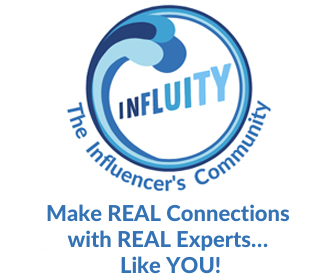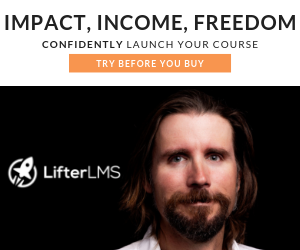1.What inspired you to write this book? Several
factors. My grandchild and the death of my younger brother. My life work has
been about inspiring others to create – I hope this book encourages and
motivates others to use their creative energy. In recent years, I am seeing
myself more as a witness to the changes of time on society and to the positive
and negative impacts of humankind. Through this book I consider the remarkable
inventions that occurred during one man’s lifetime.
2. What exactly is it about and who is it written for? It is an imagined story of the life time of John D Weaver, my great
grandfather, who died when my mother was four years old. The evidence that he
lived includes his father’s Naturalization papers, two US patents, his Civil
War Pension records, his name on a Gettysburg monument and his descendants. He
invented a hydraulic ram, which was used to pump water to cattle in the fields.
Possibly this was inspired by watching folks carry it by the bucket full. Maybe
he fetched it himself. It seems he had a life-long interest in water power.
During his life time he witnessed incredible changes – electrical power in the
home, indoor plumbing, refrigeration, telephone lines, the automobile, an
elevator, the Fuller brush man, the department store. These now overcome by a
jet, the iphone, Amazon, and escalator, etc.
3. What do you hope readers will get out of reading your book? I hope they will consider the coincidence of time – and their place in
it and that young readers will consider what their contribution might be. At
age sixteen, his father was too old and his brother was too young, but John D Weaver
was just right to serve in the Civil War. I hope the young reader will consider
that one plays the cards they are dealt. We have an opportunity and obligation
to contribute to society by addressing the needs of our generation.
4. How did you decide on the book title and cover design? About fifty years ago, I was documenting family history. I sought out
and interviewed an elderly relative in rural Pennsylvania, who I had never met
before. I asked her about John D Weaver, who would have been the brother of her
mother. She slowly shook her head and said, thoughtfully, I don’t think I know
anybody by that name. I gently prodded her, saying I think he lived nearby. After
a few moments of sifting through her memories, she looked up, a wide smile
broke out on her face, and she said, “Oh my, my oh my. I think you are talking
about Tinker – Tinker Weaver.” She told me precisely where his house had been
and, furthermore, that he had built a water wheel next to it. She said as the
wheel turned, miniature figures he had created, turned in his living room. She
said that as a little child she visited often, as did all the neighborhood
children. Hence, the title, Tinker. Weaver made his living as a
clockmaker, as did my father and my brother. The cover photo is of an antique
clock I own.
5. What advise or words of wisdom do you have for fellow writers – other
than run!? For me, I had
to learn and then to make a conscious effort to say “no”. “No” to the many
distractions in life that can keep me from writing. My advice: When you’re in
the flow, stay in the flow.
6. What trends in the book world do you see – and where do you think the
book publishing industry is heading? Certainly,
self-publishing is one of the major changes. It has provided an avenue for many
creative writers to be heard. Another is electronic books. And too, the impact
of Amazon on book selling.
7. Were there experiences in your life or career that came in handy when
writing this book? Yes, many from my early childhood. I remember my
grandmother had an ice box and an ice man delivered a huge block of ice.
Whenever I visited I helped her empty the drip pan underneath. And, too. There
is a scene in this book where Weaver takes his children to a gorge. The gorge I
was seeing as I wrote was a recollection from college, when a visiting geology
professor from Texas took the class to a see a gorge in Pennsylvania. We stood
there as he explained how time, a drip and then a trickle of water cut this
gorge. I forgot his name but never forgot him. It seemed to me this had
inspired his life work.
8. How would you describe your writing style? Which writers or books is
your writing similar to? I am not sure. I think that as
most authors I simply want to tell a story that captivates. This book is quite
different than my previous books. In Part 2 of the Tinker book, he dies.
Molly, who was particularly close to Tinker, has trouble dealing with his death
and death for the first time. Her parents do their best. Molly tells them of a
conversation she had with a wizard who visited her.
9. What challenges did you overcome in the writing of this book? I had two books going at the same time. For me this wasn’t very
productive. I was getting nowhere. Finally, I set one book aside altogether and
concentrated on Tinker, only then made progress. I’ve now resumed work
on The Mist of Time, the final book of the Ancient Echoes trilogy.
10. If people can buy or read one book this week or month, why should it
be yours? Well, if you are over a certain age you may remember your
mother hanging out laundry and using a wooden clothes prop – that will
bring a smile to your face. For others, when an ice cube drops into your glass
from the refrigerator or when you go in your laundry room, you will have a new
respect for the labor- saving appliances there – and the advances made for us
by diligent, determined creative souls and problem solvers – inventors.
About The Author: Retired Art Director. Author of Ancient
Echoes and Slipping the Grid: A Novel. Lived, worked and travelled
in the Far East and Europe, teaching and advancing programs in soldier
recreation through the arts for Department of Defense. Founding Executive
Director of the Visual Arts Center of Alaska, a cross-cultural program for
professional Native American artists and sculptors. Graduated The Pennsylvania
State University with a BS in Art Education with advanced studies at Georgia
State University. For more info, please see: www.ancient-echoes
Need PR Help?
Brian
Feinblum, the founder of this award-winning blog, with 3.6 million page views,
can be reached at [email protected] He is available to help authors
promote their story, sell their book, and grow their brand. He has over 30
years of experience in successfully helping thousands of authors in all genres.
Let him be your advocate, teacher, and motivator!
About Brian
Feinblum
Brian Feinblum should be
followed on www.linkedin.com/in/brianfeinblum. This is
copyrighted by BookMarketingBuzzBlog ©2024. Born and raised in Brooklyn, he now
resides in Westchester with his wife, two kids, and Ferris, a black lab rescue
dog, and El Chapo, a pug rescue dog. His writings are often featured in The
Writer and IBPA’s The Independent. This
award-winning blog has generated over 3.9 million pageviews. With 4,900+ posts
over the past dozen years, it was named one of the best book marketing blogs by
BookBaby http://blog.bookbaby.com/2013/09/the-best-book-marketing-blogs and recognized by Feedspot in 2021 and 2018
as one of the top book marketing blogs. It was also named by
www.WinningWriters.com as a “best resource.” For the past three decades,
including 21 years as the head of marketing for the nation’s largest book
publicity firm, and director of publicity positions at two independent presses,
Brian has worked with many first-time, self-published, authors of all genres,
right along with best-selling authors and celebrities such as: Dr. Ruth, Mark
Victor Hansen, Joseph Finder, Katherine Spurway, Neil Rackham, Harvey Mackay,
Ken Blanchard, Stephen Covey, Warren Adler, Cindy Adams, Todd Duncan, Susan
RoAne, John C. Maxwell, Jeff Foxworthy, Seth Godin, and Henry Winkler. He
hosted a panel on book publicity for Book Expo America several years ago, and
has spoken at ASJA, Independent Book Publishers Association Sarah Lawrence
College, Nonfiction Writers Association, Cape Cod Writers Association,
Willamette (Portland) Writers Association, APEX, Morgan James Publishing, and
Connecticut Authors and Publishers Association. His letters-to-the-editor have
been published in The Wall Street Journal, USA Today, New York Post, NY
Daily News, Newsday, The Journal News (Westchester) and The Washington
Post. His first published book was The Florida homeowner, Condo, &
Co-Op Association Handbook. It was featured
in The Sun Sentinel and Miami Herald.














